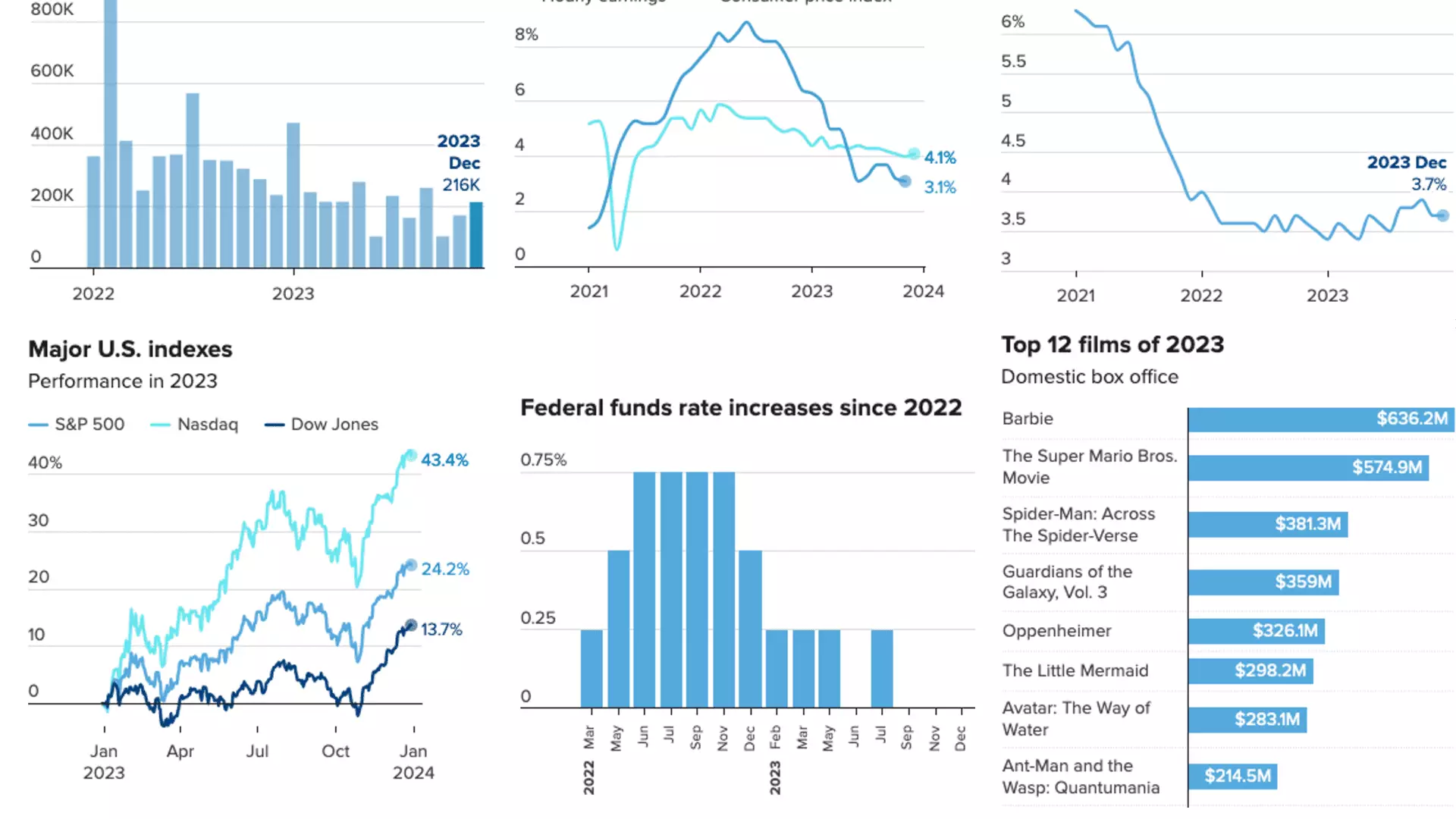The year 2023 proved to be a promising one for the U.S. economy, defying many concerns and posting impressive results. Despite worries about the state of the economy, the macroenvironment showed resilience with high levels of spending, significant market gains, and positive developments in the battle against inflation by the Federal Reserve. Moreover, the job market remained remarkably robust, creating over 200,000 jobs in December alone, and maintaining a low unemployment rate of 3.7%. Let us delve deeper into the key factors that contributed to the U.S. economy’s stability and success.
December marked the 36th consecutive month of job creation in the U.S., with a total of almost 2.7 million jobs created in 2023. Despite concerns that the Federal Reserve’s efforts to combat inflation could impact the labor market adversely, no such effects were observed. Consumer spending, a significant driver of economic growth, remained robust throughout the year, demonstrated by monthly advanced retail sales surpassing $600 million. These positive indicators underscored the resilience of U.S. consumers in the face of economic headwinds and indicated their sustained confidence in the economy.
Inflation continued to be a top concern for U.S. consumers, but 2023 brought relief as the rate of inflation significantly cooled. Additionally, wages rose steadily throughout the year, outpacing price increases. This positive trend alleviated some of the concerns and provided a more favorable environment for consumers to support economic growth.
One notable aspect of 2023 was the resurgence of travel and entertainment. This year witnessed a remarkable rebound in the travel sector, with the Thanksgiving holiday period setting new records in the U.S. Nearly 150 million passengers were screened by the Transportation Security Administration at U.S. airports in November and December, indicating a strong recovery in travel demand. Furthermore, Americans showed their enthusiasm by spending on entertainment. The U.S. box office saw a significant comeback with major hits such as “Barbie,” “Oppenheimer,” and Taylor Swift’s The Eras Tour concert film. These positive trends in the travel and entertainment industries provided a much-needed boost to the overall economy.
The year 2023 closed with substantial growth in the stock market. All three major U.S. indexes, the Dow Jones Industrial Average, the Nasdaq Composite, and the S&P 500, experienced considerable gains, primarily led by the strength of tech stocks. This growth marked one of the best years for the stock market in recent times. Even cryptocurrencies witnessed a rebound, as Bitcoin prices ended the year almost three times higher than the previous low in November of the previous year. These positive market performances contributed to overall economic stability and investor confidence.
After significant rate increases in 2022, the Federal Reserve adopted a more measured approach to combating inflation in 2023. Instead of a proactive stance, the Fed raised rates at only four of its eight meetings. Although the target range for interest rates is at its highest level since 2006, recent comments from Chair Jerome Powell have given rise to optimism among Fed watchers. There is hope that rate cuts may be implemented in 2024, indicating a more accommodative monetary policy that could support continued economic growth.
Despite the positive overall performance of the U.S. economy in 2023, there were some challenges in the housing market. Mortgage rates remained high throughout the year. Although rates significantly decreased by the end of 2023, the average 30-year fixed rate in October was nearly triple that of the end of 2020. Additionally, existing home sales remained low, pointing to a persistent inventory shortage. Until more housing inventory becomes available, these challenges are likely to persist into 2024.
Despite concerns and uncertainties, the U.S. economy showcased remarkable resilience and stability in 2023. The strong job market, cooling inflation rate, rebounding travel and entertainment sectors, impressive market performance, and strategic approach of the Federal Reserve all played significant roles in shaping the economic landscape of the year. While challenges in the housing market remained, the positive aspects of the U.S. economy outweighed these issues. As the nation looks towards the future, the year 2023 serves as a testament to the strength and adaptability of the U.S. economy.


Leave a Reply